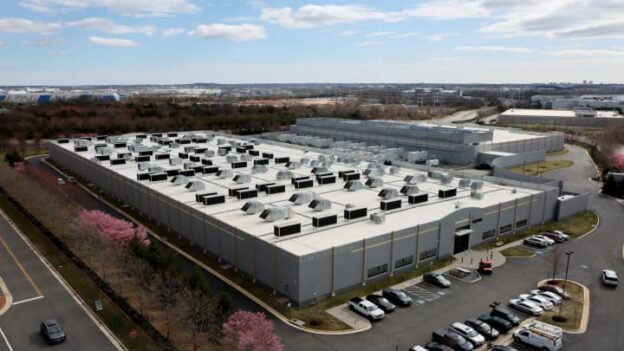McKinsey warns datacenter binge could overshoot actual demand as execs scramble to keep up with hype
A report from consultancy McKinsey & Company highlights the widespread unease over AI, pointing to the bewildering sums being invested into infrastructure to support it, while warning that forecasts of future demand are based on little more than guesswork.
The boom in AI investment has gained momentum over the past year or so, such that McKinsey now guesstimates that datacenters equipped to handle AI workloads could require as much as $7.9 trillion in capex by 2030 to keep up with demand.
We write “guesstimates” because the same report concedes that nobody is really sure what that level of AI demand is going to be. Or as the report puts it: “A lack of clarity about future demand makes precise investment calculations difficult.”
Will hyperscalers continue shouldering the cost burden, McKinsey asks, or will enterprises, governments, and financial institutions step in with new financing models? Will demand for datacenters continue to rise, lifted by a surge in AI usage, or will it fall as technical advances make AI less resource-intensive?
One question left unasked in the report: What happens if AI turns out to be useful for certain specific tasks, but not the general-purpose magic bullet that many corporate leaders believe will automate many of their business processes and let them save big on costs – mainly by eliminating human workers?
For example, a working paper released earlier this month found that generative AI has had no significant impact on earnings or recorded hours in any occupation so far, despite the billions poured into building and training the models.
Moving into actual numerical projections for AI, the report forecasts that global demand for compute capacity could almost triple by 2030, with about 70 percent of that demand coming from AI workloads. However, this depends on two factors: whether enterprises can turn AI into something with real business impact, and whether advances in technology significantly enhance compute efficiency.
The first would lead to increased demand for infrastructure, but the second would tend to lessen it – unless, as McKinsey reasons, any efficiency gains are offset by increased usage across the broader AI market – otherwise known as the Jevons paradox.
To cover itself, the company has therefore envisioned three scenarios for 2030, from “constrained demand” through “continued demand” to “accelerated demand.” The first would see an extra 78 GW of capacity added for a total capex of $3.7 trillion, while the mid-range involves 124 GW of capacity for a total of $5.2 trillion. (Additional capex required for traditional IT apps would amount to $1.5 trillion, leading to the nearly $7 trillion in total expenditure cited in the title of the report.) Accelerated demand for AI, meanwhile, would bring an extra 205 GW of capacity online at a cost of $7.9 trillion in capex just for AI.
- Generative AI is not replacing jobs or hurting wages at all, say economists
- Tech hiring stalls as AI hype, layoffs, tariffs, economic uncertainty, more collide
- After Copilot trial, government staff rated Microsoft’s AI less useful than expected
- When it comes to AI ROI, IT decision-makers not convinced
But McKinsey claims that current investment levels from potential end customers are lagging behind these projections. It says dozens of client interviews revealed that CEOs are unsurprisingly hesitant to invest in compute capacity at maximum levels, because they have limited visibility into future demand. They are unsure whether large capex sums spent on AI infrastructure today will actually produce any measurable return on investment in the future.
None of this is stopping big money from pouring into datacenter buildouts. A report from law firm DLA Piper last year found that 70 percent of financiers, consultants, and operators expect to see AI datacenter funding continue to rise, despite growing concerns about the availability of power to supply those projects.
One reason is that the projected returns are currently favorable compared to other areas of the economy, as Digital Realty senior VP Fabrice Coquio told The Register last month, and this is drawing in investors without prior experience in the bit barn sector.
“In the UK, in France, in Germany, you’ve got people coming from nowhere having no experiences … that have no idea about what AI and datacenters are really, and still investing in them,” Coquio said, describing it as “a typical bubble.”
McKinsey advises that companies need to assess AI computing needs early, anticipate potential shifts in demand, and design scalable investment strategies that can adapt as AI models and use cases evolve.
Striking the right balance between growth and capital efficiency will be critical, it says. ®
https://www.theregister.com/AMP/2025/05/01/ai_dc_investment_gamble/





